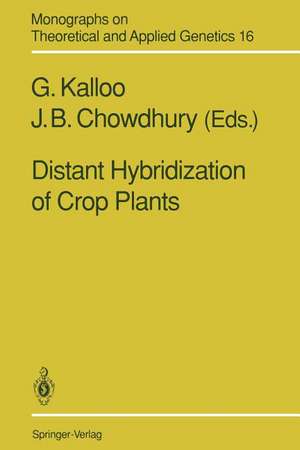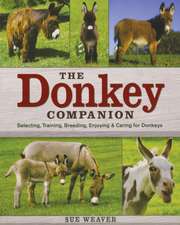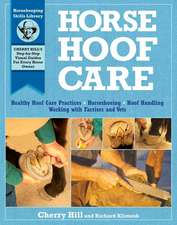Distant Hybridization of Crop Plants: Monographs on Theoretical and Applied Genetics, cartea 16
Editat de G. Kalloo, J. B. Chowdhuryen Limba Engleză Paperback – 30 dec 2011
Din seria Monographs on Theoretical and Applied Genetics
- 20%
 Preț: 559.63 lei
Preț: 559.63 lei - 18%
 Preț: 985.38 lei
Preț: 985.38 lei -
 Preț: 383.71 lei
Preț: 383.71 lei - 20%
 Preț: 555.35 lei
Preț: 555.35 lei - 15%
 Preț: 641.38 lei
Preț: 641.38 lei - 15%
 Preț: 644.30 lei
Preț: 644.30 lei - 15%
 Preț: 643.65 lei
Preț: 643.65 lei - 15%
 Preț: 649.71 lei
Preț: 649.71 lei - 15%
 Preț: 639.41 lei
Preț: 639.41 lei -
 Preț: 387.20 lei
Preț: 387.20 lei - 15%
 Preț: 642.68 lei
Preț: 642.68 lei - 15%
 Preț: 639.25 lei
Preț: 639.25 lei - 15%
 Preț: 637.59 lei
Preț: 637.59 lei - 15%
 Preț: 636.30 lei
Preț: 636.30 lei - 15%
 Preț: 644.82 lei
Preț: 644.82 lei - 15%
 Preț: 648.42 lei
Preț: 648.42 lei - 15%
 Preț: 643.16 lei
Preț: 643.16 lei - 20%
 Preț: 558.52 lei
Preț: 558.52 lei - 15%
 Preț: 639.08 lei
Preț: 639.08 lei
Preț: 640.06 lei
Preț vechi: 753.01 lei
-15% Nou
Puncte Express: 960
Preț estimativ în valută:
122.51€ • 133.12$ • 102.98£
122.51€ • 133.12$ • 102.98£
Carte tipărită la comandă
Livrare economică 21 aprilie-05 mai
Preluare comenzi: 021 569.72.76
Specificații
ISBN-13: 9783642843082
ISBN-10: 3642843085
Pagini: 288
Ilustrații: XI, 271 p. 3 illus.
Dimensiuni: 155 x 235 x 15 mm
Greutate: 0.41 kg
Ediția:Softcover reprint of the original 1st ed. 1992
Editura: Springer Berlin, Heidelberg
Colecția Springer
Seria Monographs on Theoretical and Applied Genetics
Locul publicării:Berlin, Heidelberg, Germany
ISBN-10: 3642843085
Pagini: 288
Ilustrații: XI, 271 p. 3 illus.
Dimensiuni: 155 x 235 x 15 mm
Greutate: 0.41 kg
Ediția:Softcover reprint of the original 1st ed. 1992
Editura: Springer Berlin, Heidelberg
Colecția Springer
Seria Monographs on Theoretical and Applied Genetics
Locul publicării:Berlin, Heidelberg, Germany
Public țintă
ResearchCuprins
1 Introductory Considerations on Distant Hybridization.- 1.1 Introduction.- 1.2 Various Uses of Wild Species.- 1.3 Basic Considerations on Efficient Utilization of Wild Species.- 1.4 Interspecific Barriers.- 1.5 Sexual Versus Somatic Interspecific Hybridization.- 1.6 Asexual Transfer of Alien Genes into Plants Through Genetic Engineering.- 2 Crossability Relations.- 2.1 Introduction.- 2.2 Crossability Relations of Selected Crop Plants.- 2.3 Barriers to Crossability.- 2.4 Genetics of Crossability Relations.- 2.5 Conclusions.- 3 Unilateral Incompatibility.- 3.1 Introduction.- 3.2 Unilateral Interspecific Incompatibility.- 3.3 Incongruity.- 3.4 Genetic Studies.- 3.5 Genetics of Other Reciprocal Cross Differences.- 3.6 Physiology of Unilateral Incompatibility.- 3.7 Ultra Structural Aspects of Unilateral Incompatibility.- 3.8 Biochemical and Molecular Basis of Unilateral Incompatibility.- 3.9 Implications.- 4 Overcoming the Barriers in Hybridization.- 4.1 Introduction.- 4.2 Techniques for Overcoming Pre-Fertilization Barriers.- 4.3 Techniques for Overcoming Post-Fertilization Barriers.- 4.4 Conclusions.- 5 Amphidiploids/Synthetic Crop Species.- 5.1 Introduction.- 5.2 Genetics.- 5.3 Cytology.- 5.4 Evolutionary Advantage.- 5.5 Cytogenetics of Amphidiploid Crop Plants.- 6 Cytogenetics of F1 and Their Progenies.- 6.1 Introduction.- 6.2 Cytology of the F1 Hybrids During the Premeiotic Stages.- 6.3 Meiotic Behavior.- 7 Apomixis in Distant Hybridization.- 7.1 Introduction.- 7.2 Embryo Sac Development in Apomictic Species.- 7.3 Embryo and Endosperm Development in Apomicts.- 7.4 Adventive Embryogenesis.- 7.5 Special Cases.- 7.6 Genetics of Apomixis.- 7.7 Factors Affecting Apomixis.- 7.8 Apomixis in Crop Improvement.- 7.9 Improvement of Apomictic Crops.- 7.10 Seed Production in Apomicts.- 7.11 Concluding Comments.- 8 Selection Theory and Procedure in Progenies of Distant Hybrids.- 8.1 Introduction.- 8.2 Theoretical Considerations.- 8.3 Self-Pollinated Crops.- 8.4 Cross-PollinatedCrops.- 9 Utilization of Wild Species.- 9.1 Introduction.- 9.2 Use of Wild Relatives.- 9.3 Breeding Methods.- 9.4 Enhancement of Recombination.- 9.5 Cytogenetical Technique.- 9.6 Prebreeding.- 9.7 Haploidy.- 10 Somatic Cell Hybridization.- 10.1 Introduction.- 10.2 Methodologies for Protoplast Isolation and Regeneration.- 10.3 Protoplast Fusion.- 10.4 Selection Procedures.- 10.5 Identification and Characterization of Somatic Hybrids.- 10.6 Cytoplasmic Genes.- 10.7 Fusion-Mediated Gene Transfer (FMGT) of Nuclear Traits.- 10.8 Some Examples of Agricultural Applications.- 10.9 Concluding Remarks.- 11 Molecular Biology/Genetic Transformation in Distant Hybridization.- 11.1 Introduction.- 11.2 New Methodologies.- 11.3 Introduction of DNA in Cells.- 11.4 Summary.- References.








